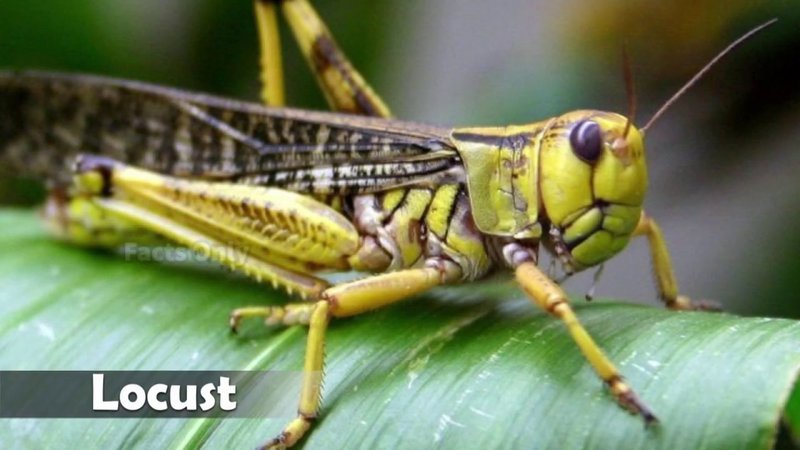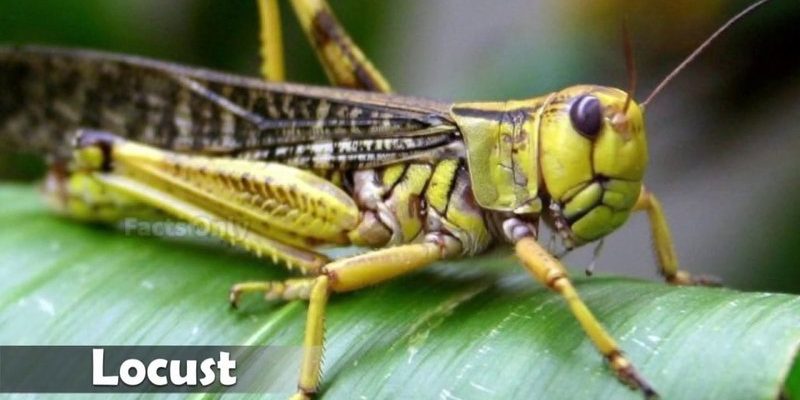
These insects are part of the grasshopper family, but what sets locusts apart is their ability to change behavior and appearance when they start to swarm. In this article, we’re diving into the world of locusts to uncover ten fascinating facts about these extraordinary bugs. So, grab your coffee, and let’s get started on this insect journey!
1. Locusts Are Masters of Transformation
You might be surprised to learn that locusts can actually change their physical appearance and behavior. When they’re in a solitary phase, they look and act like regular grasshoppers—small, green, and peaceful. However, when they begin to swarm, they undergo a dramatic transformation. Their color can change to a bright yellow or even pink, and they can also grow larger.
This transformation is triggered by environmental conditions and population density. When locusts feel crowded, they start to change chemically, leading to this fascinating metamorphosis. It’s almost like they have a built-in alarm system that tells them when it’s time to band together and take over a new area.
2. Swarms Can Be Massive
Speaking of transformations, did you know that locust swarms can grow to enormous sizes? A swarm can consist of billions of locusts covering an area of up to 1,500 square kilometers (about 579 square miles)! That’s like a small army marching together.
These swarms can travel up to 150 kilometers (around 93 miles) in a single day, making them incredibly efficient at finding new food sources. When they arrive, they can consume enough crops to feed thousands of people, leading to severe food shortages in affected areas. It’s both amazing and alarming just how powerful these little creatures can become.
3. They Communicate Like Us!
You might think that insects don’t have much in the way of communication, but locusts are the exception. They communicate through a combination of sounds and vibrations. When swarming, they rub their back legs together to produce a sound called “stridulation.” This is somewhat similar to how crickets chirp.
This sound lets other locusts know they’re nearby and plays a key role in coordinating their movements. Imagine having a conversation with your friends just by tapping your feet together—kind of quirky, isn’t it? These sounds help form the massive, synchronized movements we see in swarms.
4. Locusts Are Great for the Ecosystem
While locusts can be devastating to agriculture, they also play an important role in the ecosystem. When they swarm, they help recycle nutrients back into the soil. Their feeding habits can clear out overgrown vegetation, allowing new plants to grow.
Think of it as nature’s way of pruning the landscape. By consuming older plants, locusts create space and resources for new growth. In some areas, they even contribute to the health of grasslands. So, while they can be a headache for farmers, they also help maintain balance in their natural environments.
5. Climate Change Influences Swarming Behavior
You may be wondering how climate change impacts locusts. It turns out that shifts in temperature and rainfall patterns can create the ideal conditions for locusts to reproduce and swarm. For instance, more rainfall can lead to lush vegetation, providing plenty of food for locusts.
As the climate continues to change, scientists are concerned that we might see more frequent and larger swarms. This makes understanding locust behavior essential for planning and managing agricultural resources. Keeping a close eye on these insect behaviors can help predict potential swarms before they wreak havoc.
6. They Come in Different Species
Locusts aren’t a one-size-fits-all type of insect. There are over 30 species of locusts around the world. The most well-known species is the Desert Locust (Schistocerca gregaria), notorious for its ability to form large swarms and its devastating effects on crops.
Each species has its own habitat preferences and behavior patterns. For example, the Migrant Locust (Locusta migratoria) is known for its long migrations while the Australian Plague Locust can cause significant agricultural damage. It’s fascinating to see how diverse these insects can be while still sharing some core characteristics.
7. They’re Survivors
Locusts have an impressive ability to survive harsh conditions. They can withstand droughts and extreme temperatures much better than many other insects. When food is scarce, locusts have the ability to enter a state of dormancy, slowing down their metabolism to conserve energy.
This dormancy enables them to wait out unfavorable conditions. It’s like hitting the pause button until things improve. Once they sense better conditions, they spring back to life and can rapidly reproduce, leading to another potential swarm.
8. Social Creatures at Heart
When you think of locusts, you might picture a lone insect, but in reality, they thrive on social dynamics. Locusts are social insects, meaning that their behaviors are influenced by their interactions with others. When they are in a solitary phase, they tend to be more cautious, but as they gather in groups, they become more bold.
This social behavior is key to their ability to swarm successfully. It’s like when you get together with friends and suddenly feel more adventurous to try something new. In the locust world, this communal spirit can lead to large migrations and swarming events that can change landscapes.
9. They Have Some Unique Eating Habits
Locusts are primarily herbivores, munching on a variety of plants. Their diet can change based on what is available, making them opportunistic feeders. They can consume up to their own weight in food each day!
It’s almost like going to an all-you-can-eat buffet and having a feast! This massive intake can cause rapid depletion of local vegetation, which is one of the reasons swarms can be so destructive. But on the flip side, their appetite helps to keep ecosystems in check by preventing any one type of plant from dominating.
10. We Can Learn from Locust Behavior
Understanding how locusts behave can teach us valuable lessons about group dynamics, communication, and resilience. Scientists study locust swarms to gather insights into how social creatures respond to environmental pressures.
The mechanisms that drive their swarming behavior can be useful in many fields, from robotics to urban planning. By observing these fascinating insects, we can gain a greater understanding of complex systems and how groups can work together for survival.
In conclusion, locusts are not just pests; they are incredible creatures with remarkable abilities and behaviors. From their transformative nature to their role in ecosystems, there’s much more to these insects than meets the eye. The next time you think about locusts, remember how they shape the world around us, and appreciate their unique place in nature!

